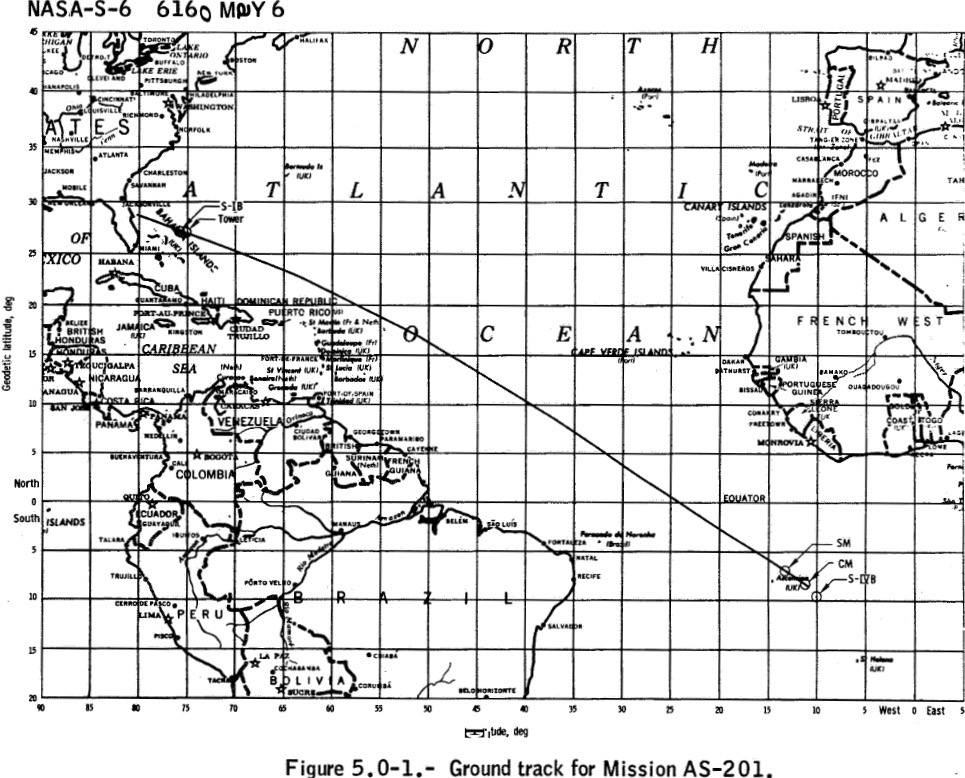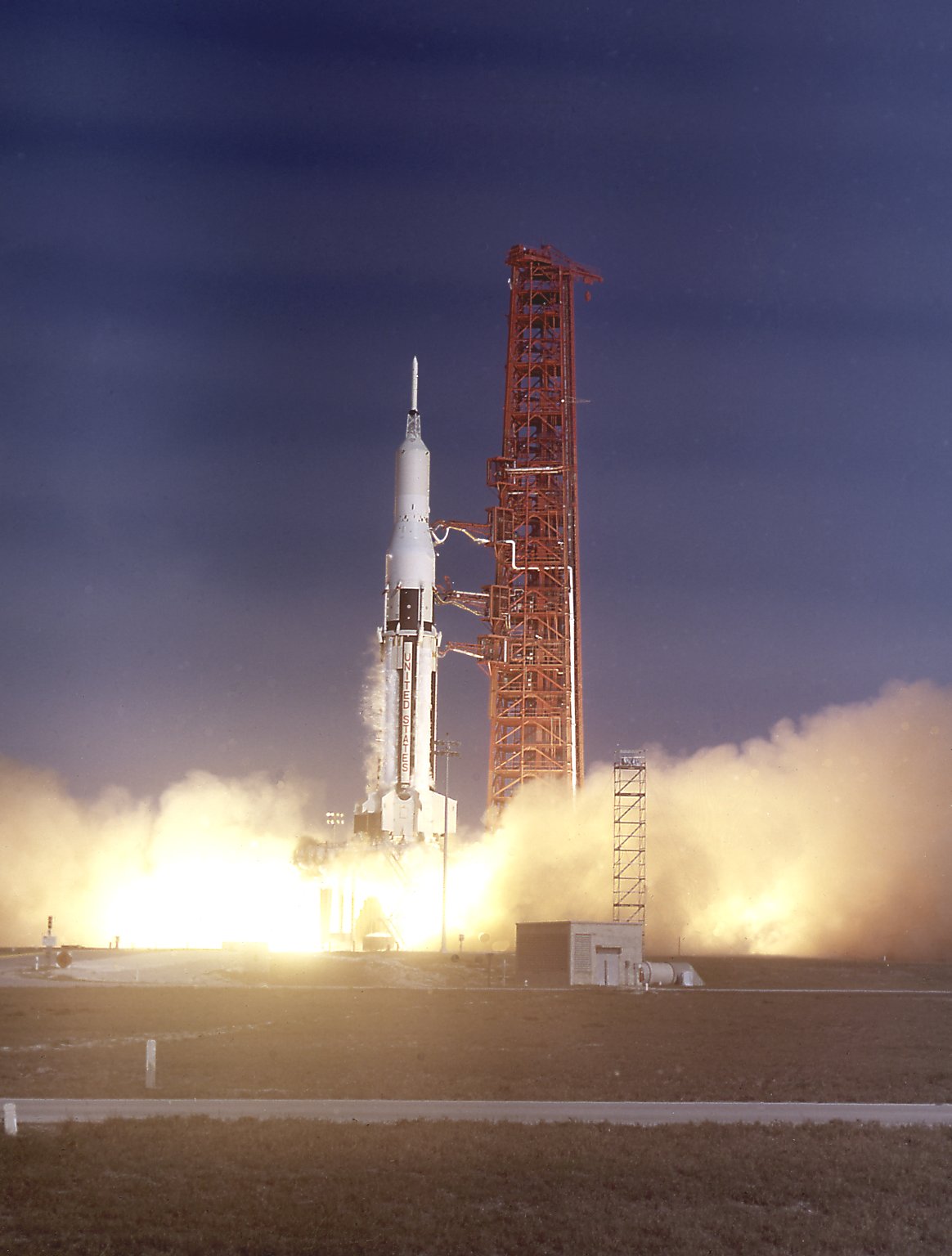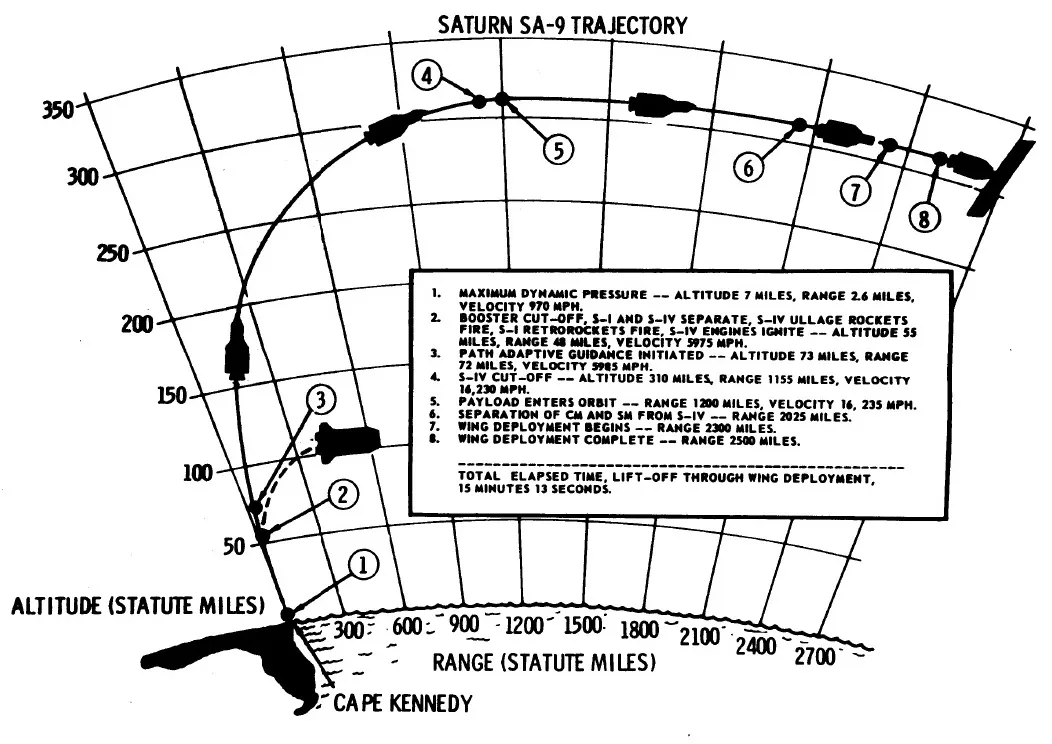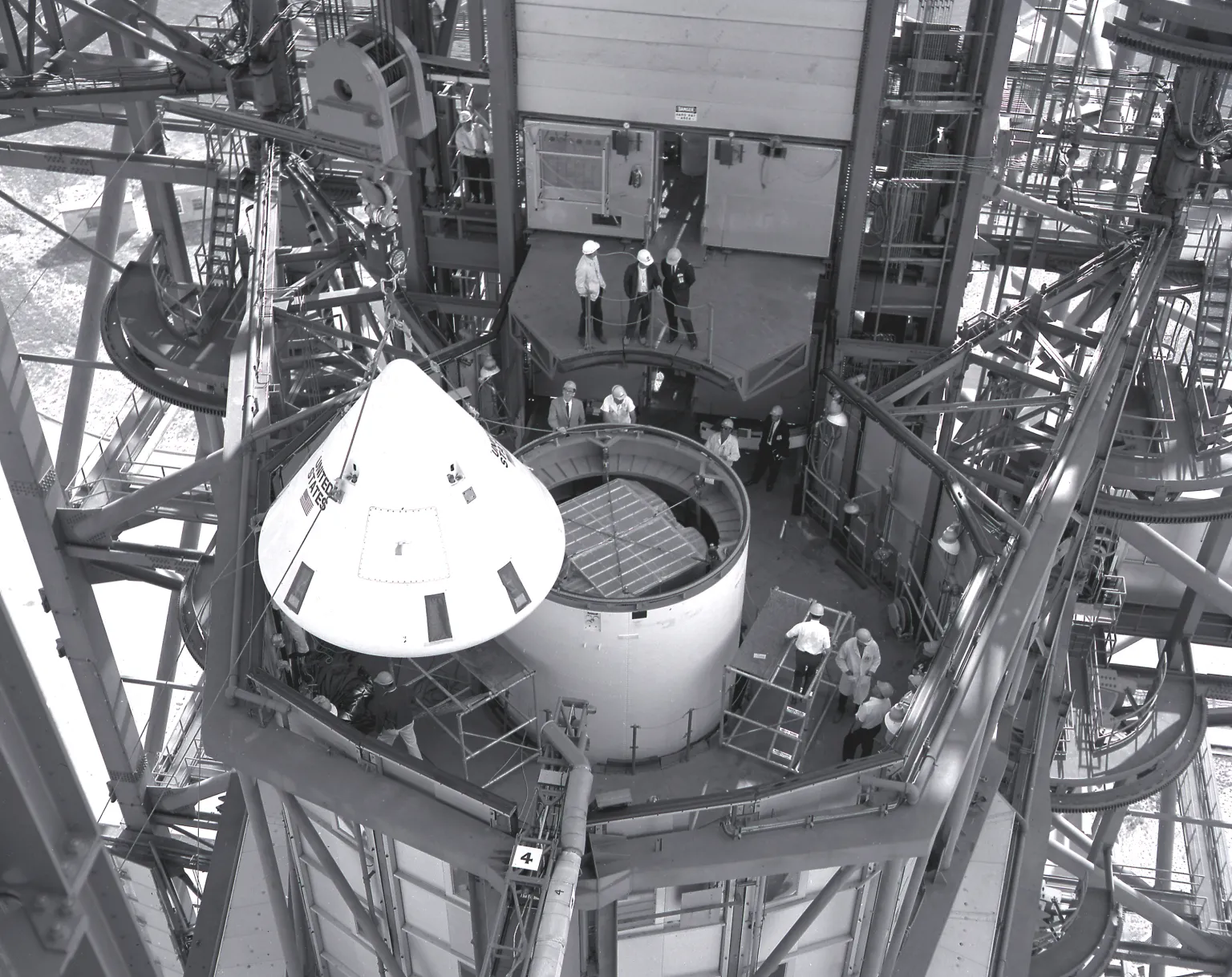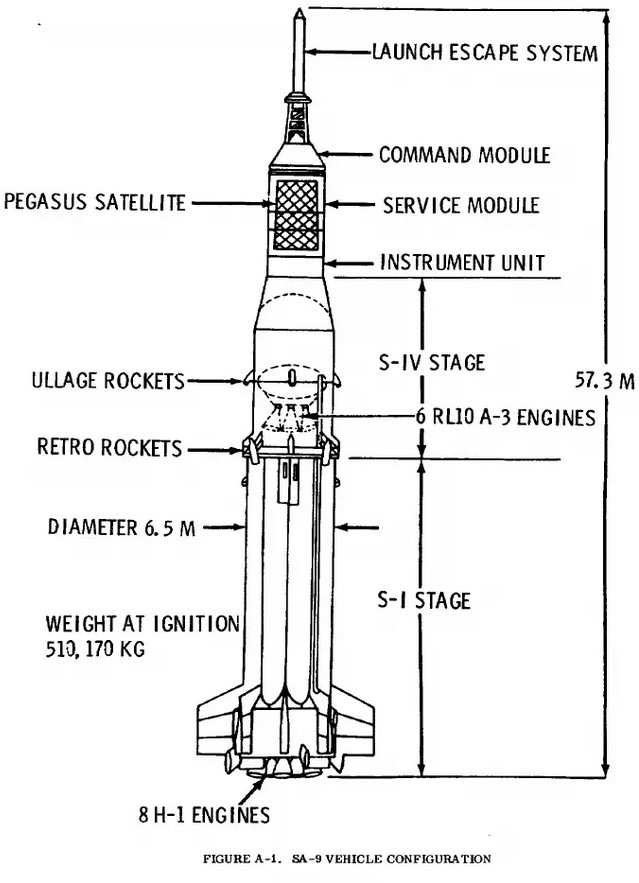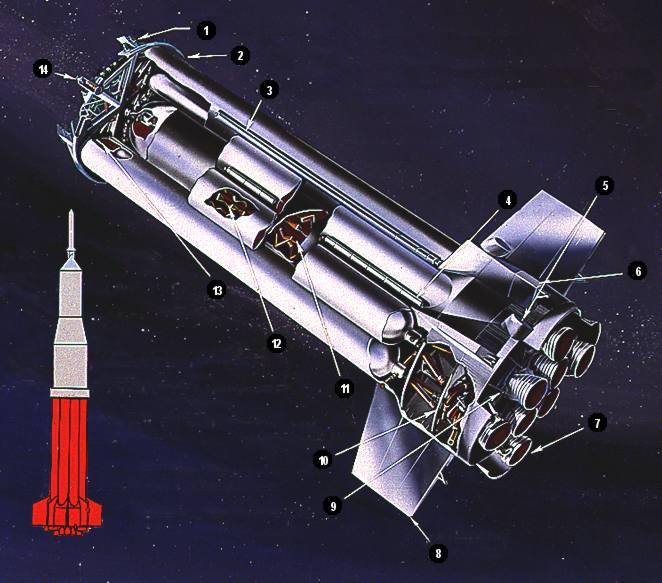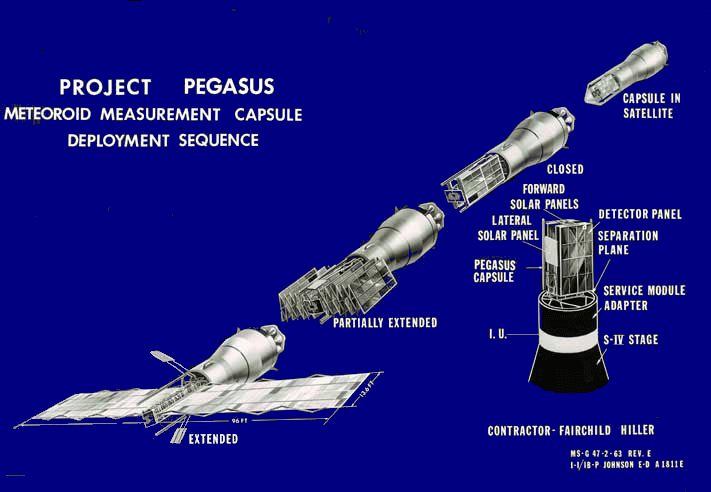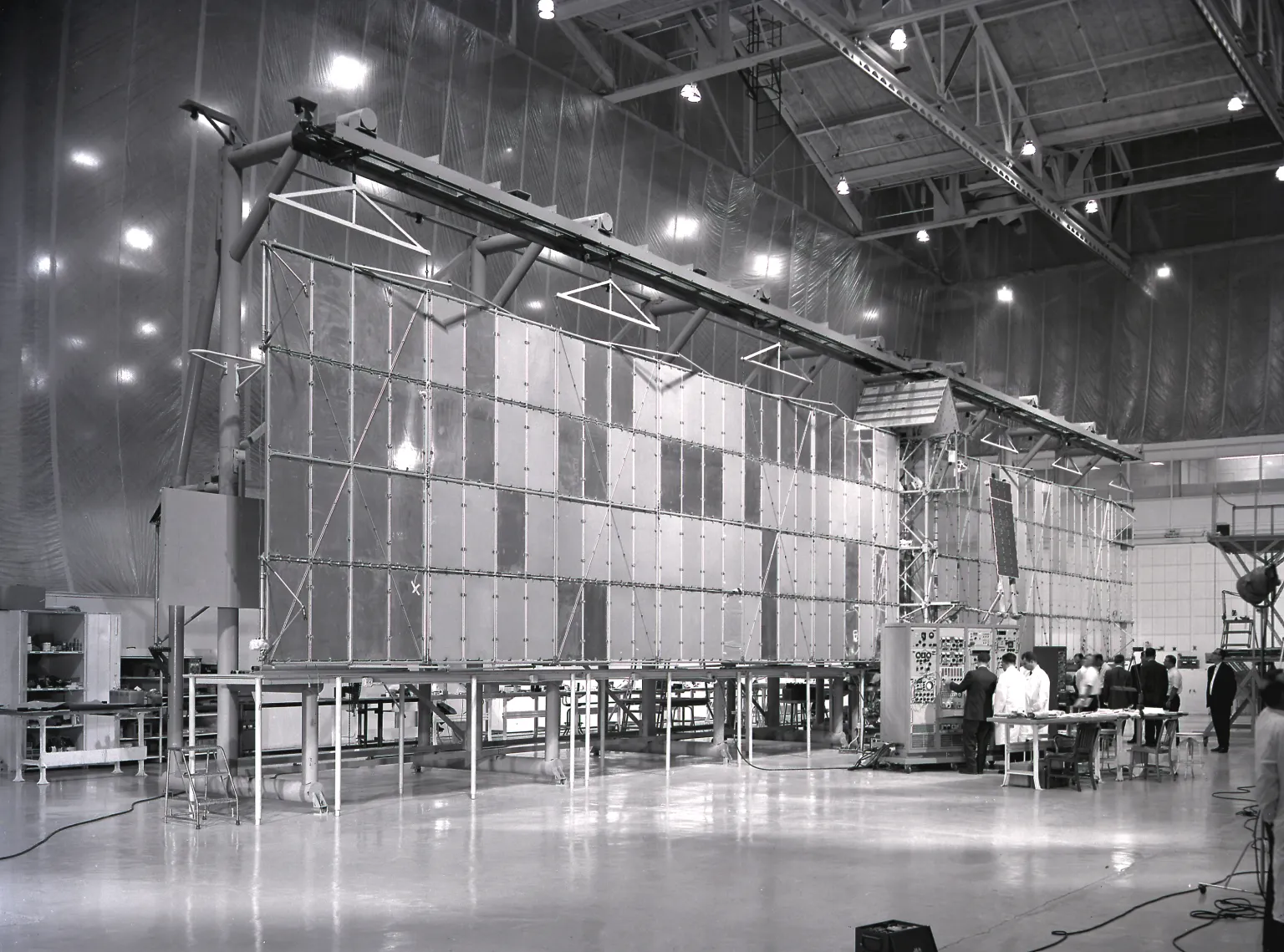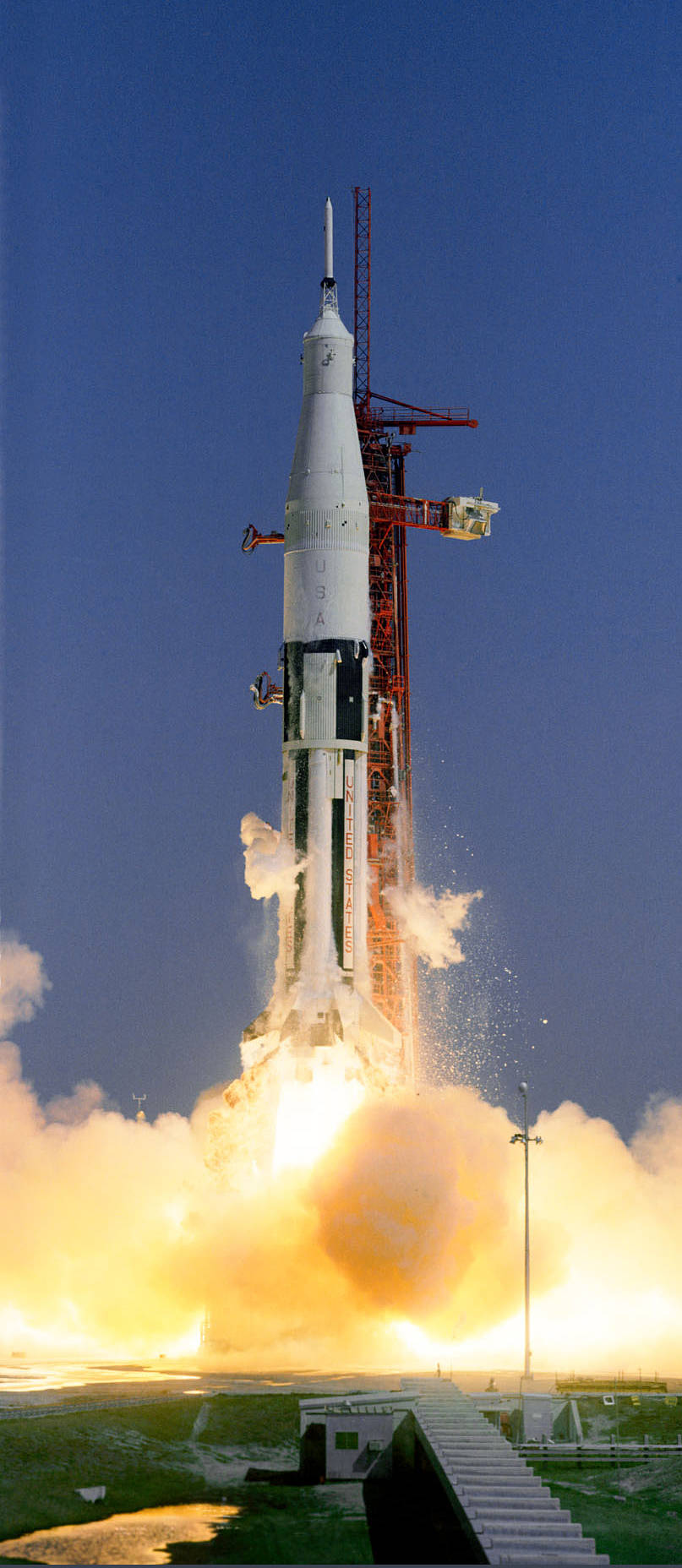
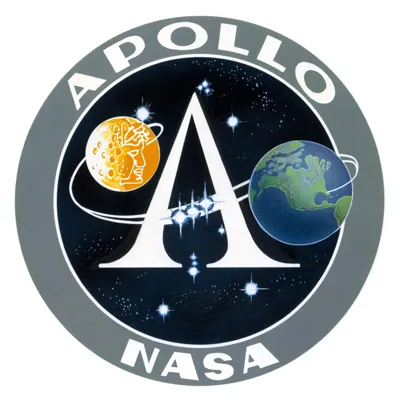 26 February 1966: AS-201, the first Apollo/Saturn IB, was launched, carrying the first complete Block 1 Apollo Command and Service Module on an unmanned suborbital test flight. The launch took place at Launch Complex 34, Cape Kennedy Air Force Station, Cape Kennedy, Florida.
26 February 1966: AS-201, the first Apollo/Saturn IB, was launched, carrying the first complete Block 1 Apollo Command and Service Module on an unmanned suborbital test flight. The launch took place at Launch Complex 34, Cape Kennedy Air Force Station, Cape Kennedy, Florida.
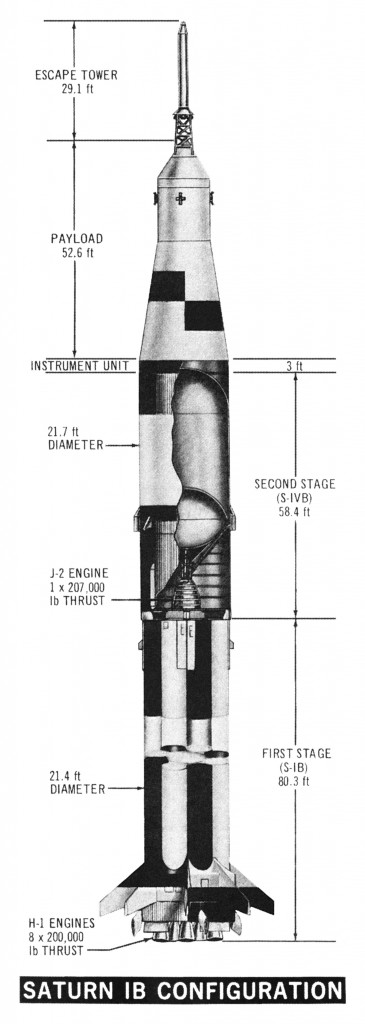
This flight was a demonstration of the combined Apollo Command Module and the Service Module. The second production Apollo capsule, CM-009, and the first production service module, SM-009, were launched by the first Saturn IB, SA-201.¹ (When combined, the capsule and service module are referred to as the CSM.)
The command to ignite the eight H-1 first stage engines was sent from the Mission Control Room at T-3.038 (16:11:56.962 UTC).² The engines ignited at T-2.45 and began to build thrust. First motion occurred at T+0.11.
Liftoff ³ was at 16:12:01.37 UTC, T+0.37. AS-201 climbed vertically for 11.2 seconds before beginning a pitch and roll maneuver which carried the space vehicle to its planned trajectory. Control of the mission was shifted from the Cape Kennedy Air Force Station to Mission Control at the Manned Spacecraft Center, Houston, Texas. Flight Director Glynn S. Lunney was now in charge.
AS-201 reached Mach 1 at T+65.7. The vehicle experienced its maximum dynamic pressure (max q) at T+77.7.
Maximum acceleration was reached at T+141.5, just as the first stage engines were shut down.
The S-IB first stage inner engines cutoff (IECO) occurred at T+141.5, and outer engine cutoff (OECO), at T+146.9. The vehicle had reached an altitude of 31.4 nautical miles (36.1 statute miles/58.2 kilometers) and was 33.9 nautical miles (39.0 statute miles/62.8 kilometers) downrange. It was traveling at 7,499.66 feet per second (5,113.4 miles per hour/8,229.2 kilometers per hour). The first stage was jettisoned.
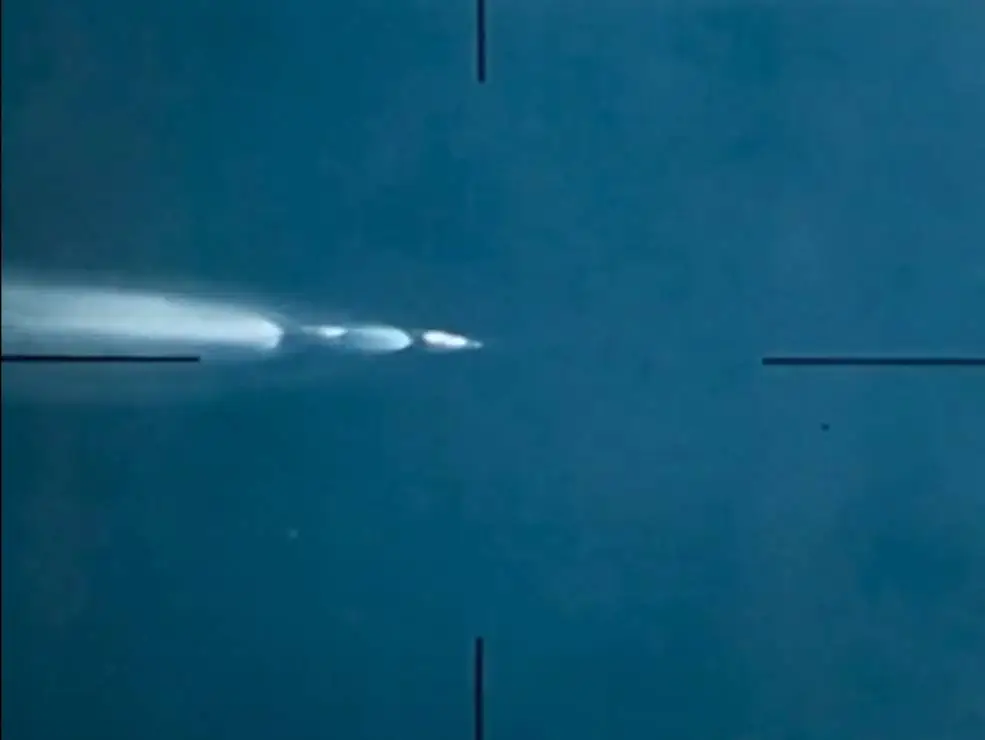
The S-IVB second stage engine ignition occurred at T+149.3. The Launch Escape System (LES) was jettisoned at T+172.6. The vehicle continued to accelerate until its J-2 engine cut off at T+602.9. The vehicle had now reached an altitude of 141.2 nautical miles (162.5 statute miles/261.5 kilometers) and was 857.9 nautical miles (987.3 statute miles/1,588.8 kilometers) downrange, traveling 22,769.23 feet per second (15,524.5 miles per hour/24,984.2 kilometers per hour). The S-IVB and Command and Service Module separated at T+844.9.
The Apollo CSM reached a maximum altitude (apogee) of 265.7 nautical miles (305.8 miles/492.1 kilometers) at T+1020.0. As it began to descend, the Service Module’s Service Propulsion Subsystem (SPS) was tested. The SPS was powered by a non-throttleable, restartable, AJ10-137 rocket engine, built by Aerojet General Corporation of Azusa, California. This engine was fueled by Aerozine 50, a hypergolic 50:50 mixture of Unsymmetrical dimethylhydrazine (UDMH) and nitrogen tetroxide (N2O4). It produced 20,500 pounds of thrust (91.19 kilonewtons) in vacuum. It was designed for a 750 second burn, or 50 restarts during a flight. The first burn was from T+1211.2 –1395.2 (184 seconds), and the second, from T+1410.7–1420.7 (10 seconds). The engine did not operate exactly as planned during the flight. Thrust was erratic, possibly as a result of helium ingestion into the engine oxidizer feed line.
CM/SM separation occurred at T+1455.0, at an altitude of 138.9 nautical miles (159.8 statute miles/257.2 kilometers) and 3,660 nautical miles (4,211 statute miles/6,778 kilometers) down range. The command module was now traveling at a speed of 25968 fps (17,705 miles per hour/28,494 kilometers per hour). During reentry, the maximum deceleration was 14.3 gs. The Apollo capsule landed near Ascension Island in the South Atlantic Ocean, 4,577 nautical miles (5,267 statute miles/8,477 kilometers) from Cape Canaveral, and about 45 miles from the primary recovery ship. (S. 8.18°, W 11.15°) Total duration of the flight was 37 minutes, 19.7 seconds.
The Apollo spacecraft was recovered by USS Boxer (LPH- 4), a Wasp-class amphibious assault ship, and taken to Norfolk, Virginia.
Mission AS-201 was successful, though several problems occurred during the flight. These were identified and corrected on the following production vehicles.
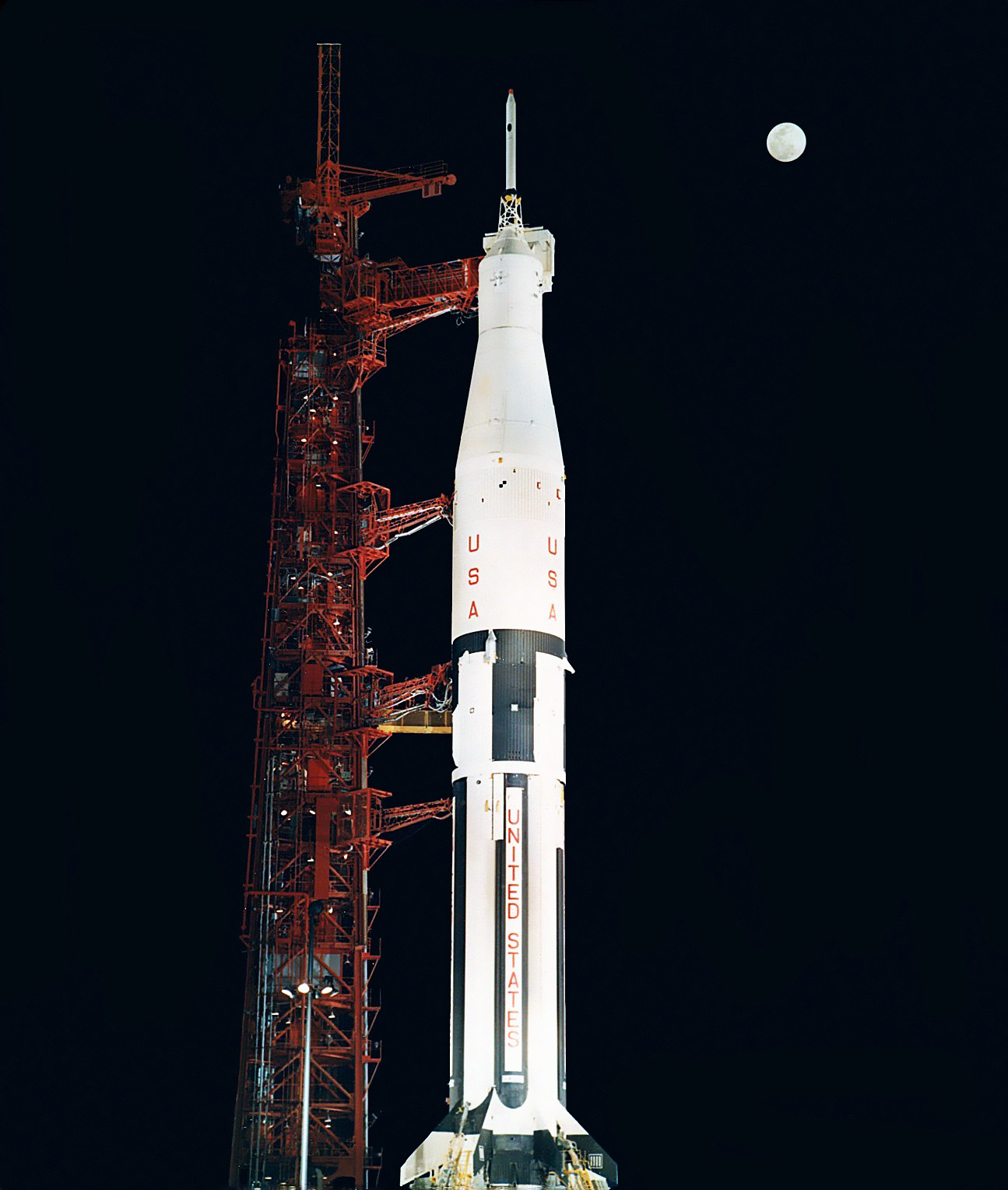
Apollo/Saturn IB AS-201 was approximately 223 feet, 4 inches (68.072 meters) tall. The total vehicle weight was 1,320,220 pounds (598,842 kilograms).

Construction of CM-009 began in 1963. It was accepted 20 October 1965 and shipped to the Kennedy Space Center, arriving at the Manned Spacecraft Operations Building (MSOB) on 25 October. The CSM was stacked on the vehicle 26 December 1965. The Launch Escape System was added 24 January 1966.
Between the CSM and the Saturn IB was the Spacecraft-Lunar Module Adapter (SLA) structure, also built by NAA. This conical section had a length of 28 feet, 0 inches (8.5344 meters) and tapered from a diameter of 12 feet, 10 inches (3.9116 meters) to 21 feet, 8 inches (6.604 meters). No Lunar Module was carried on this flight.
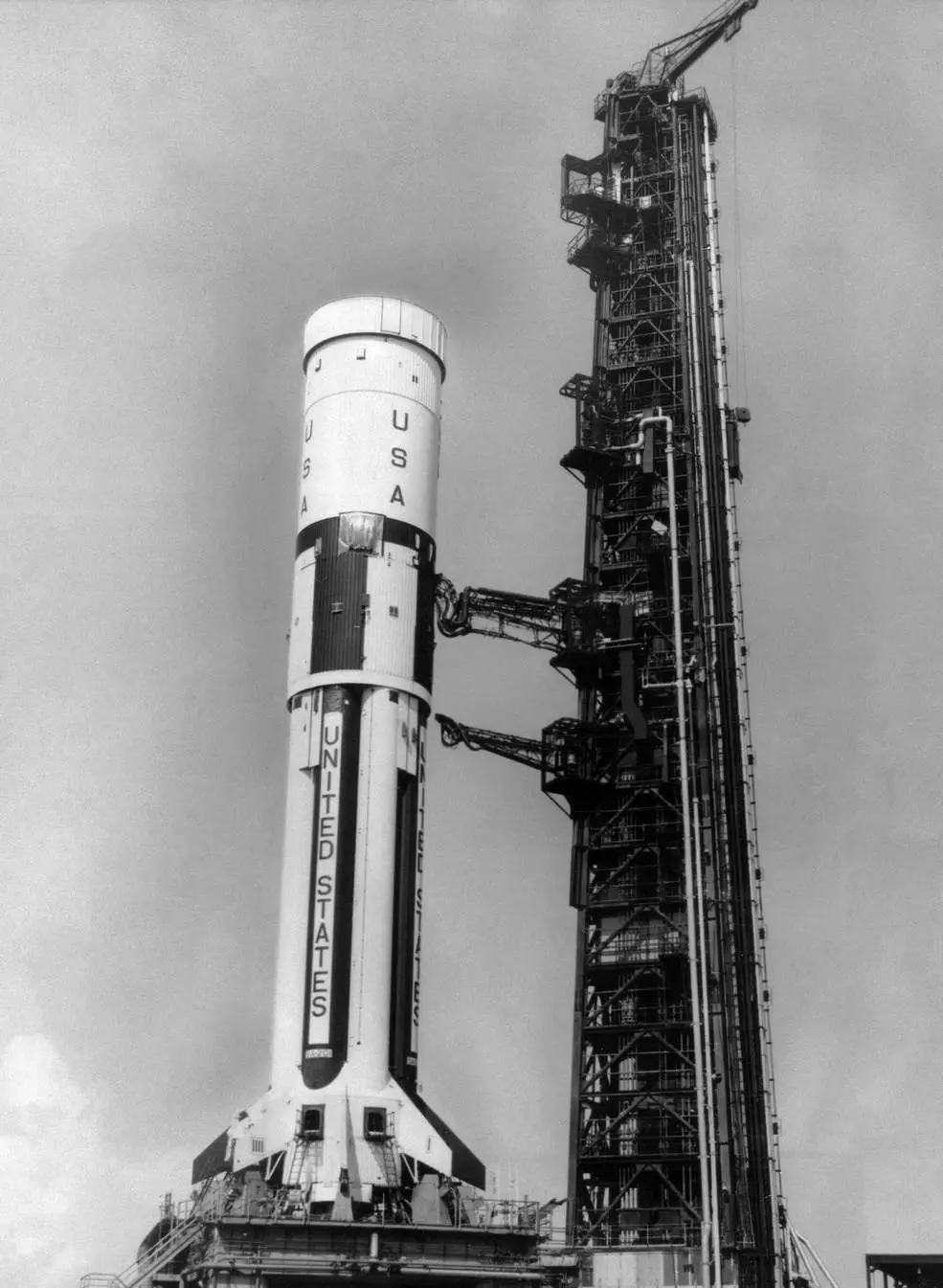
The Saturn IB two-stage launch vehicle was numbered SA-201. It consisted of an S-IB first stage, an S-IVB second stage, an Instrumentation Unit, and various fairings and adapters. It was capable of launching a 46,000 pound (20,865 kilogram) payload to Earth orbit.
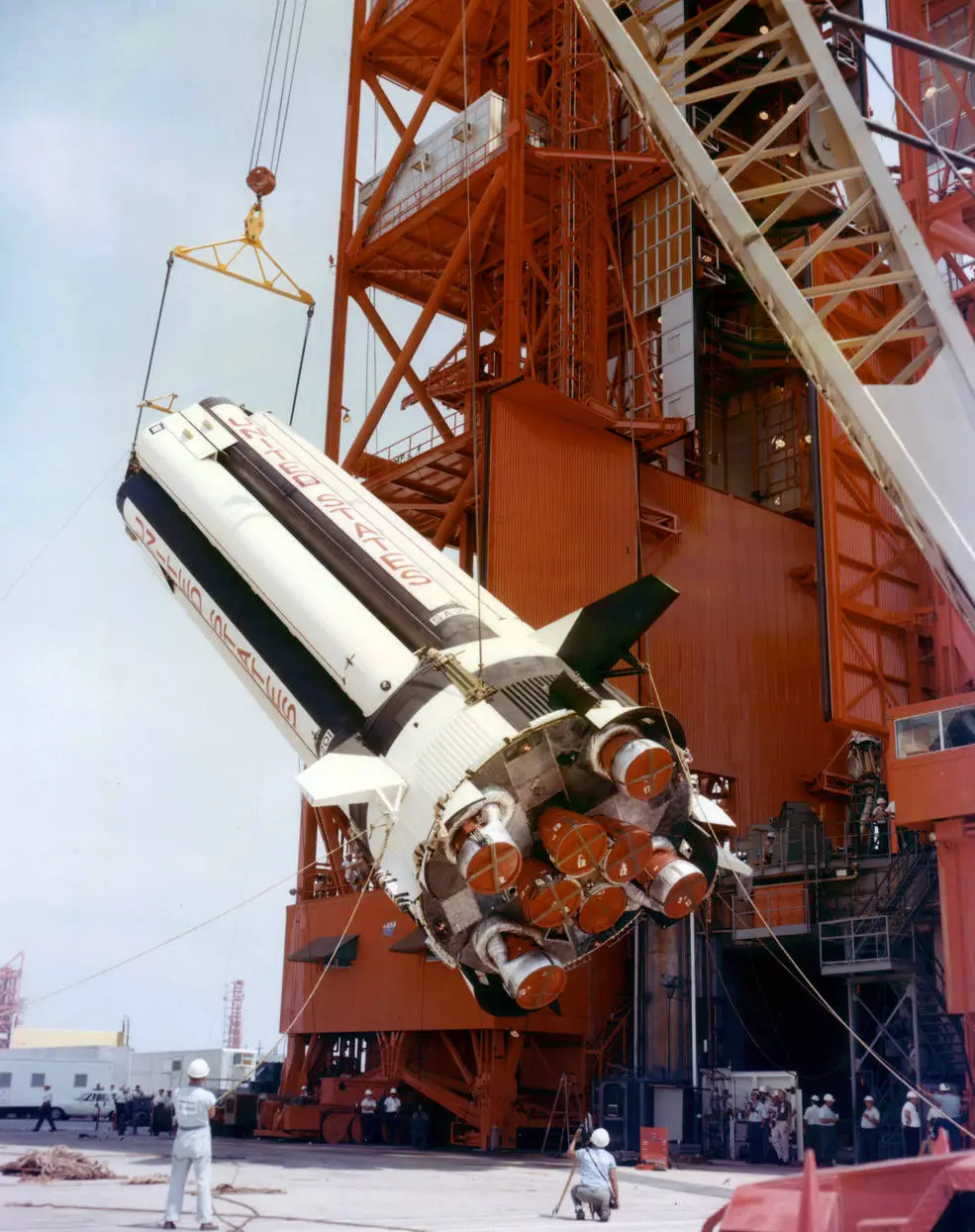

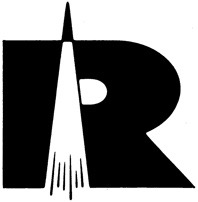
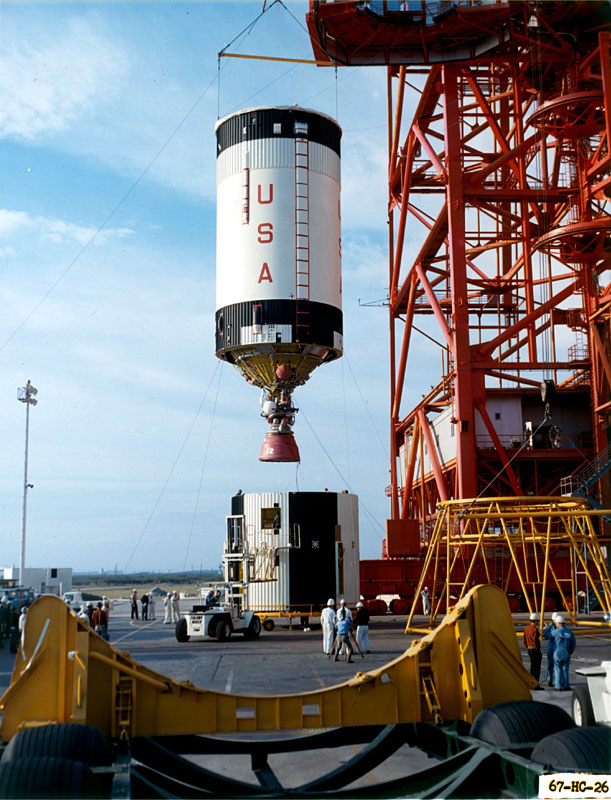

It was powered by a single Rocketdyne J-2 engine, fueled by liquid hydrogen (LH2) and LOX. The J-2 produced 229,714 pounds of thrust (1,021.819 kilonewtons), at high thrust, and 198,047 pounds (880.957 kilonewtons) at low thrust). The second stage carried enough fuel for 7 minutes, 49.50 seconds burn at high thrust.

After being recovered, the AS-201 Apollo command module was used for drop tests. It is at the Strategic Air and Space Museum, Ashland, Nebraska.
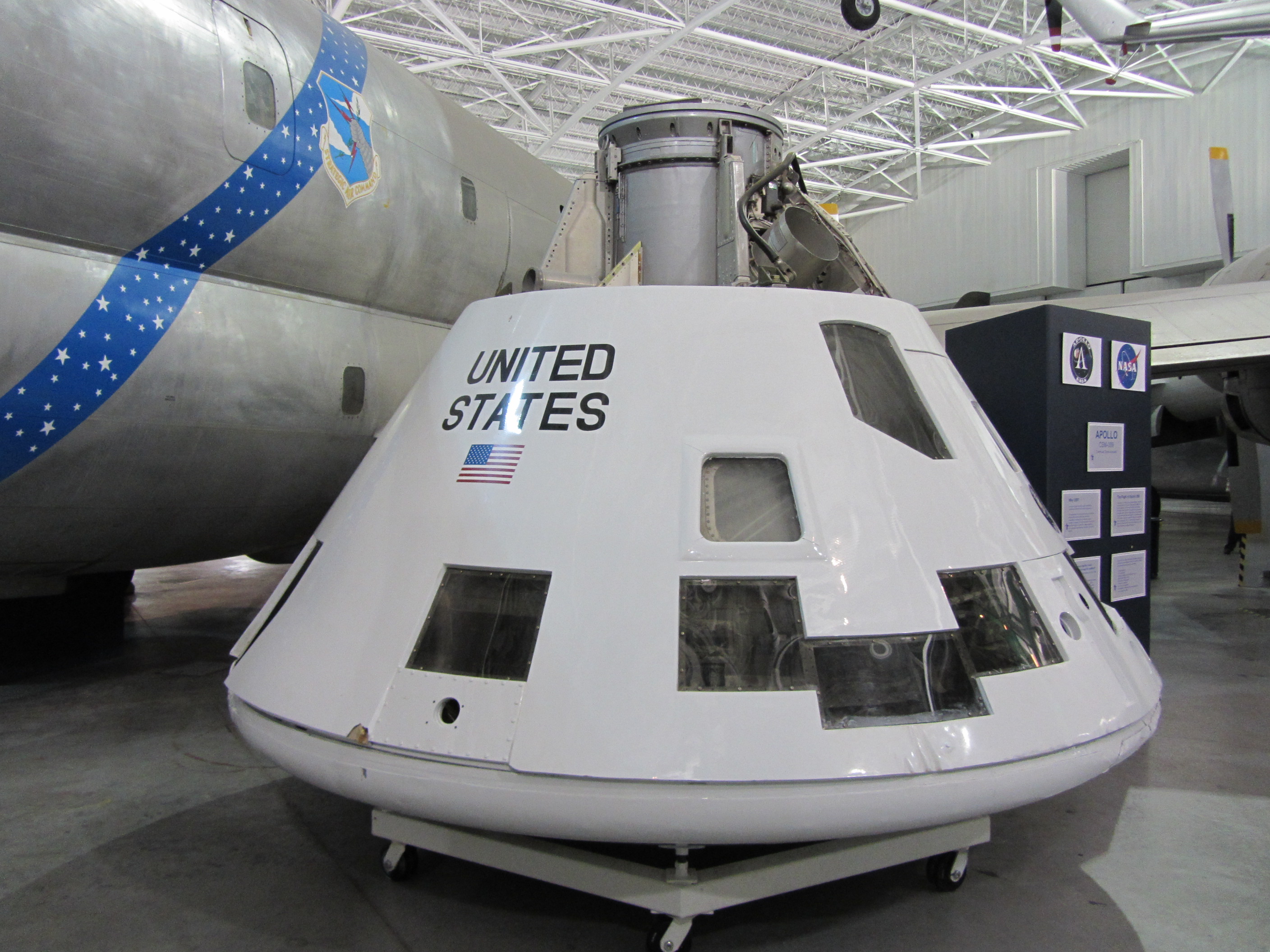
¹ NASA vehicle designations can sometimes be confusing. In this case, “AS-201” designates the all-up Apollo/Saturn IB Space Vehicle, number 201, including the first and second stages, the instrument package, lunar module adapter, service module, command module CM-009, and Launch Escape System (LES). “Spacecraft SC-009” refers to the LES, the CSM and the SLA. The “Saturn IB SA-201,” refers to just the two-stage launch vehicle, number 201: the S-IB first stage, S-IVB second stage, and the Instrumentation Unit. It does not include the payload.
² Range Zero, T-0 (“tee minus zero”), is the last full second before liftoff. This is the time reference for all mission events. In this case, T-0 was 16:12:01.000 UTC (11:12:01 a.m., Eastern Standard Time).
³ Lift off is defined as the instant of Instrumentation Unit umbilical disconnect. This is distinct from “First Motion.”
⁴ The total thrust the the eight H-1 engines of the S-IB first stage was only slightly more than that of just one of the five Rocketdyne F-1 engines of the Saturn V’s S-IC first stage booster.
© 2024, Bryan R. Swopes
